On the anniversary of Chandra Shekhar Azad, Kreately Media brings some lesser known facts about Chandra Shekhar Azad


Today, marks the 90th death anniversary of the Indian revolutionary, Chandra Shekhar Azad. Chandra Shekhar Azad died on 27 February, 1931 in Alfred Park, Allahabad after an associate betrayed him to the British.
Not many literatures are available on Azad due to the self censorship of the revolutionaries and Azad remained underground most of his adulthood. [Source of the article: Azad by Wariach.]
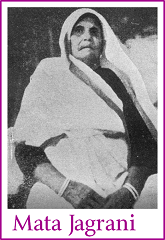
Azad and Photo:
There are only four photographs of Azad. Azad always avoided taking photos as those would lead to arrest.
The below photo was taken after Azad received canning for his involvement in the Non-cooperation movement. The people hailed their young hero by garlanding him. As Azad was too tiny to be seen he was made to stand on a table beside a charka. The revolutionary comrades of Azad came to know of the photo in the year 1963. This photo was kept hidden behind a frame by Azad’s close relative (Shivinayak) who was a congressite.
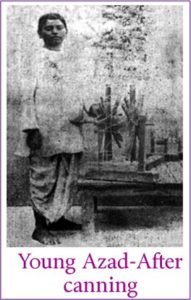
The below two photos were taken with the consent of Azad by his artist friend Master Rudra Narayan. One was taken after Azad took his bath. When the photo was about to be taken Azad told “let me twirl my moustache”.
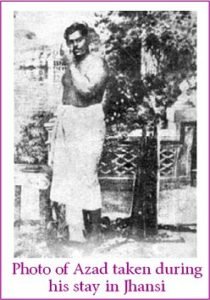
The next was taken with the family of Master Rudra Narayan.
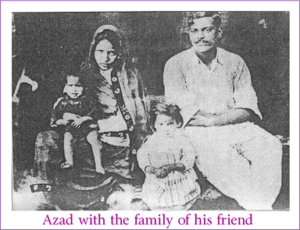
However Azad later regretted for consenting and asked his friend to approach Master ji for the photos. Master ji was hesitant to destroy the photos and he cemented behind the wall. This remained a secret between Master ji and the revolutionary comrade of Azad.(These two where the original surviving photos of adult (alive) Azad)
The fourth one was taken by the police after the martyrdom of Azad in the Alfred Park (Azad Park).
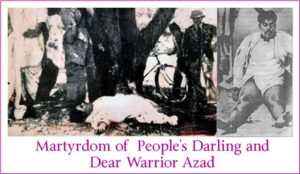
Once Azad was returning to his shelter (now the Brahmanchari, underground period) was encountered by police. The police asked “Are you Azad” For this reply came as Indeed we are Azad (free) and Azad tried to escape from the police. Sensing the police was not ready to leave him Azad gave a stern reply “Our Hanumanji is more important than your officer and left. (Police did not like to incur the wrath of a saint).
Another was, a police used to tell to a person (whom he was visiting for weeks) “One day I will surely arrest Azad”. The funny part is the police did not knew that the person with whom he was interacting was indeed AZAD.
Azad used to hum the following phrases:
“Jehidin hoi hai surajva
Arhar ke daliya, dhan ke bhatua
Khoob kachar ke kaibena
Array jehidin hoi hai surajva”
(In Independent India, the masses will have enough food to eat, clothes to wear and house to live in. This was the dream of Azad).
Rumour behind Azad:
Azad shot himself-FALSE
Azad had one bullet left-FALSE
According to post mortem report, doctor say It would be error to believe Azad shot himself. Below is the version of it.
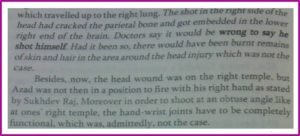
Hence Azad was shot dead by the police invalidating the claim that he committed suicide.
Last Rites:
Azad left untouched by the police and his say came true.
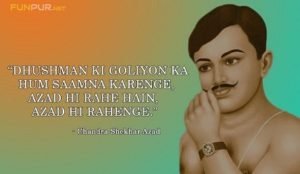
(Boldly we shall face the bullets of the enemy Free we are and free we will remain)
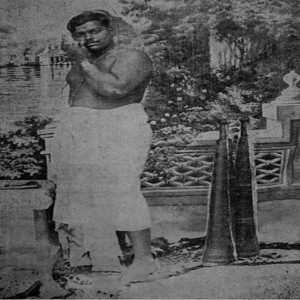
This is the image of “Hutatma Chandrashekhar Azad” with his favorite pistol named “Bamtulbukhara”. The image was captured by Professor Rudranarayan. Chandrashekhar Azad was highly against capturing of photos, the reason being, if Britishers found these photos they would use them against the freedom fighters and owing to this there are merely 3-4 pictures of Chandrashekhar azad.
On 9th August, 1925 freedom fighters of “Hindustan Republican Association” robbed 9-down passenger train near Kakori station. After this conspiracy many freedom fighters like Ramprasad Bismil, Thakur Roshan Singh, Ashfaqullah Khan, Rajendra Lahidi got captured but somehow Chandrashekhar Azad escaped. During this time, he remained underground at Master Rudranarayan’s home in Jhansi as his little brother named Harishankar.
On one morning Master Rudranarayan was working with his camera and Chandrashekhar Azad came there. Master Rudranarayan asked him, can he capture his one image and miracle happened. Somehow Chandrashekhar Azad agreed for the photograph. After this incident Master Rudranarayan captured one more image of Chandrashekhar Azad with his wife “Munni Devi” along with his two daughters.
In the year 1929, during Azad’s stay in Kanpur, he remembered about those photographs and sent Vishwanath Vaishampayan to Jhansi in order destroy them. Whereas in Jhansi, Master Rudranarayan told Vaishampayan that after some years India will get freedom from the Britishers, if this photographic plates are destroyed the upcoming generations will not be able to see the images of these fighters.
Today, we are able to see the photographs of this mighty warrior only due to the presence of mind shown by Master Rudranarayan!
DISCLAIMER: The author is solely responsible for the views expressed in this article. The author carries the responsibility for citing and/or licensing of images utilized within the text.

